AI Summary
Would you like to use Mailjet to improve email deliverability on your WordPress site? Mailjet offers a robust email delivery service with advanced features like real-time analytics and a modern API that helps ensure your emails reach their intended recipients.
This tutorial will show you how to set up the Mailjet mailer in WP Mail SMTP.
What is Mailjet?
Mailjet is a comprehensive email delivery service that combines powerful sending infrastructure with advanced marketing features. It’s trusted by businesses worldwide to handle both transactional and marketing emails with high deliverability rates.
- Cost: Mailjet offers a free plan that includes up to 6,000 emails per month (with a daily limit of 200 emails). Paid plans start with higher sending limits and include additional features like API support, dedicated IPs, and advanced analytics.
- From Email Requirements: You’ll need to use an email address at your own domain (e.g., [email protected]) to use Mailjet with WP Mail SMTP.
- Bottom Line: Mailjet is an excellent choice for businesses of all sizes, offering scalable email delivery infrastructure combined with marketing capabilities. It provides detailed analytics, a modern REST API, and strong deliverability features.
Note: For more information about available mailers, please check out the complete guide to mailers in WP Mail SMTP
Setting Up Your Mailjet Account
First, you’ll need to create a Mailjet account. To get started, visit Mailjet’s pricing page and choose the plan that best fits your needs.
For our example, we’ll be signing up for their free plan (limited to 200 emails per day). However, the setup process will be the same no matter which plan you choose.

After signing up and verifying your email, you’ll be taken to your Mailjet dashboard where you can begin setting up your account.
Authenticating Your Domain
Before you can start sending emails through Mailjet, you’ll need to authenticate your domain. This process verifies that you own the domain you’re sending from and helps improve your email deliverability.
Adding Your Sending Domain
First, you’ll need to add and verify your domain in Mailjet. To begin this process, log in to your Mailjet account and go to your account settings. Under the Senders and Domains section, click on Add a domain or sender address.
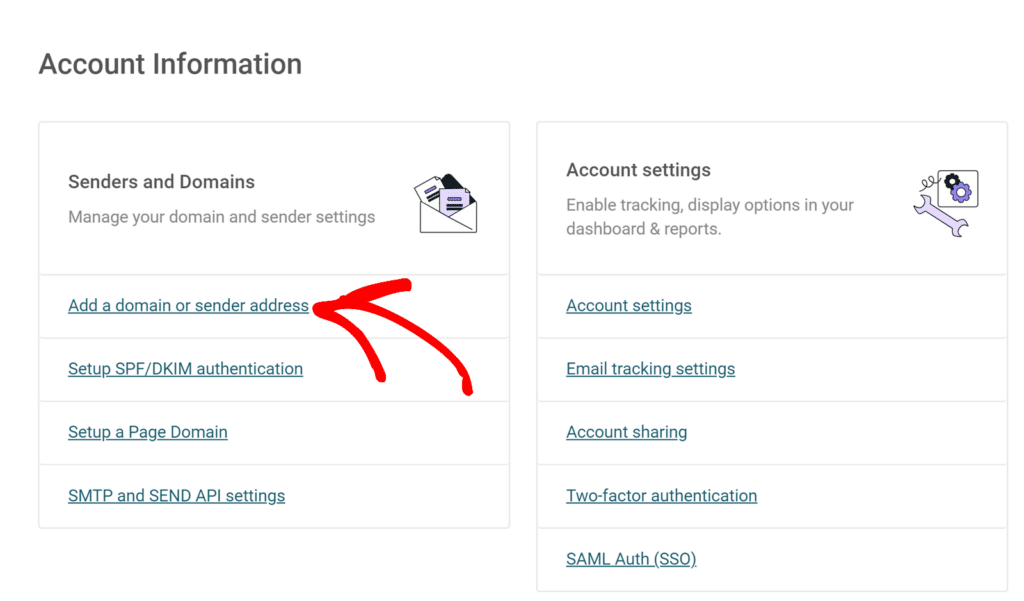
On the Domains page, click the Add domain button.
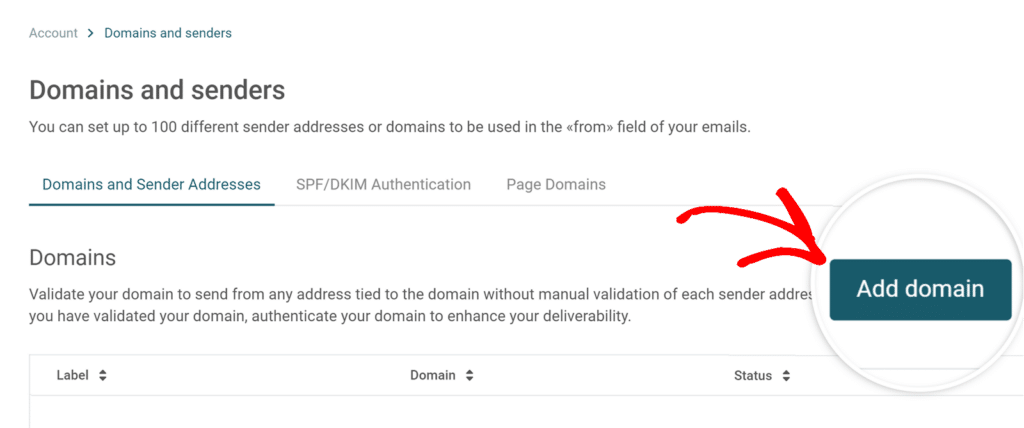
This will open a popup window where you’ll enter your website’s domain (such as example.com) and a label to help you identify this domain. Once done, click the Add button to proceed.
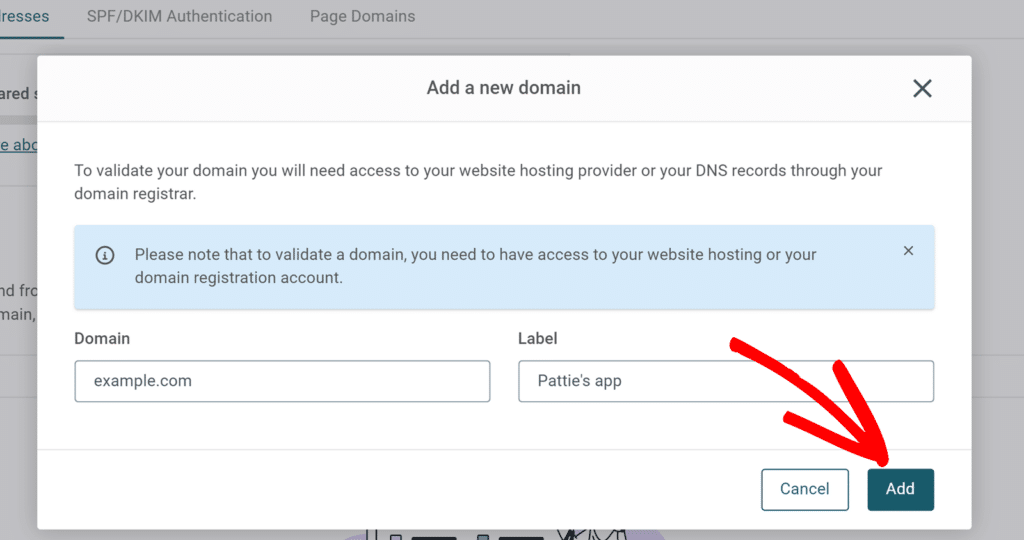
Validating Your Domain
After adding your domain, Mailjet will present you with two validation methods. The first option is to host a temporary file on your website. With this method, you’ll create an empty file with the provided filename and upload it to your website’s root directory.
The second method, which we recommend, is to create a DNS record. For this option, you’ll need to access your domain’s DNS settings and add a new TXT record. Mailjet will provide you with the specific hostname and value to use for this record.
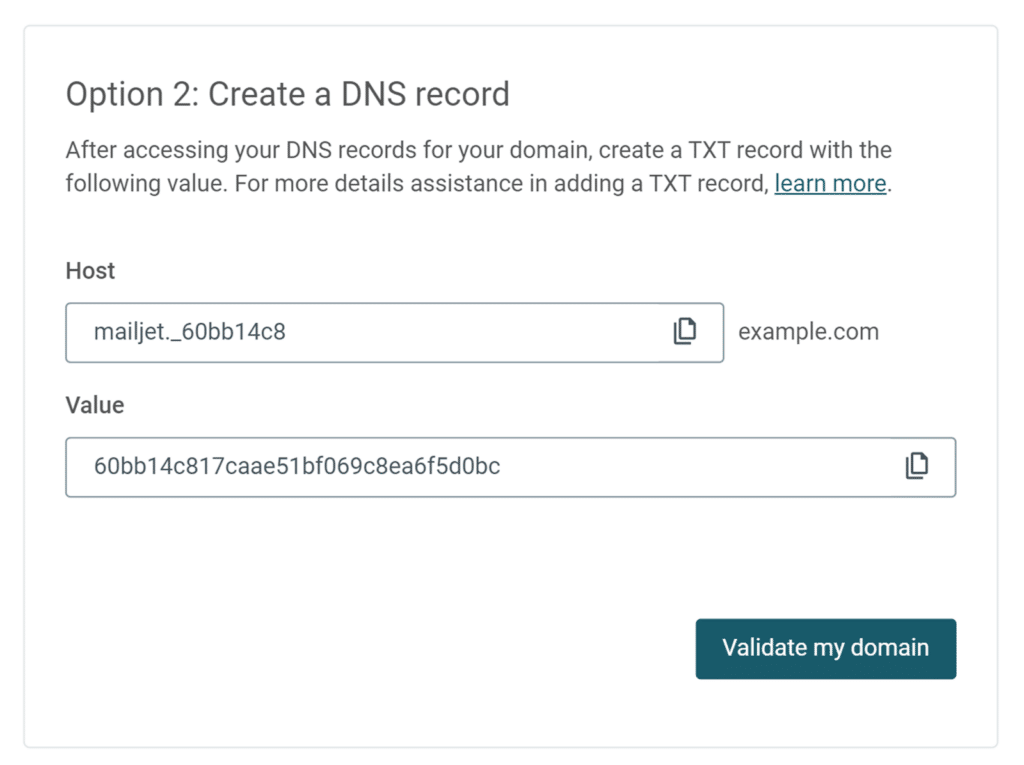
Note: For complete step-by-step instructions on DNS authentication, including detailed screenshots and troubleshooting tips, please see Mailjet’s domain verification guide.
Verifying Your DNS Records
Once you’ve added the TXT record, you’ll need to wait a few minutes for the DNS changes to propagate. Then return to the Mailjet domain validation page and click the Validate my domain button. Mailjet will automatically check your DNS records and confirm the validation.
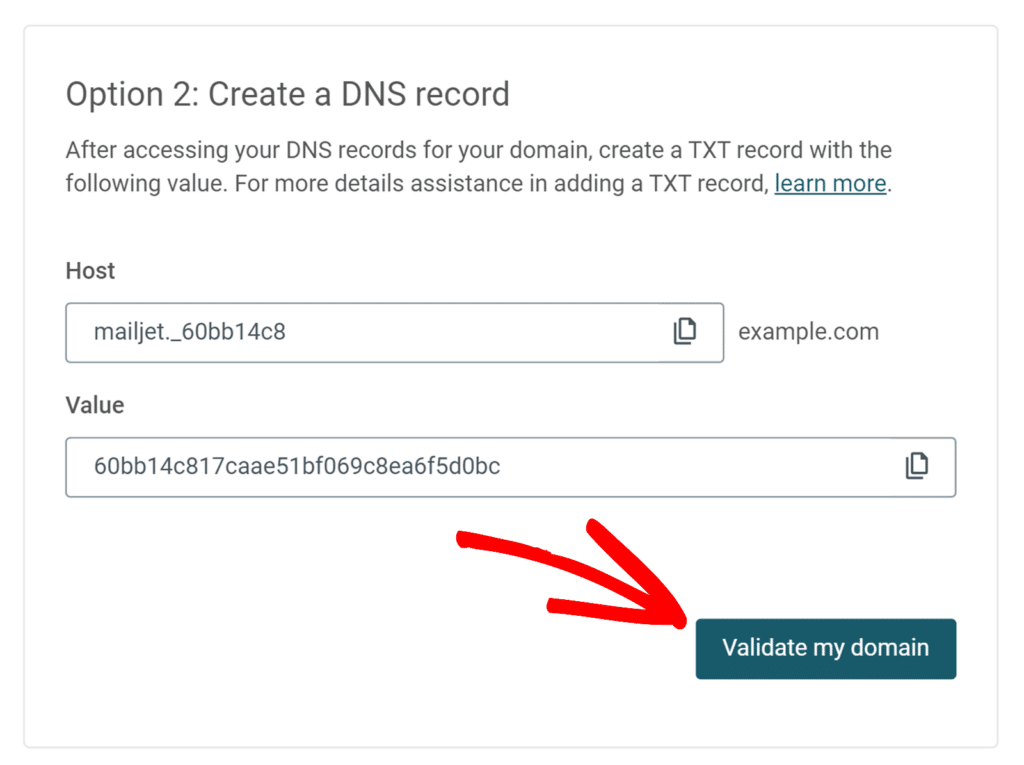
However, there’s no need to wait on this just yet! You can move ahead to the next step while you wait for this verification to complete. Just be sure to keep this tab or window open, as we’ll need it a little later.
Setting Up WP Mail SMTP
Now that you’ve set up your Mailjet account and authenticated your domain, you can configure WP Mail SMTP to use Mailjet for sending emails.
Before you get started on this section, be sure to install and activate the WP Mail SMTP plugin.
Once WP Mail SMTP is installed, you’ll need to go to WP Mail SMTP » Settings and select the General tab to open the plugin settings page.
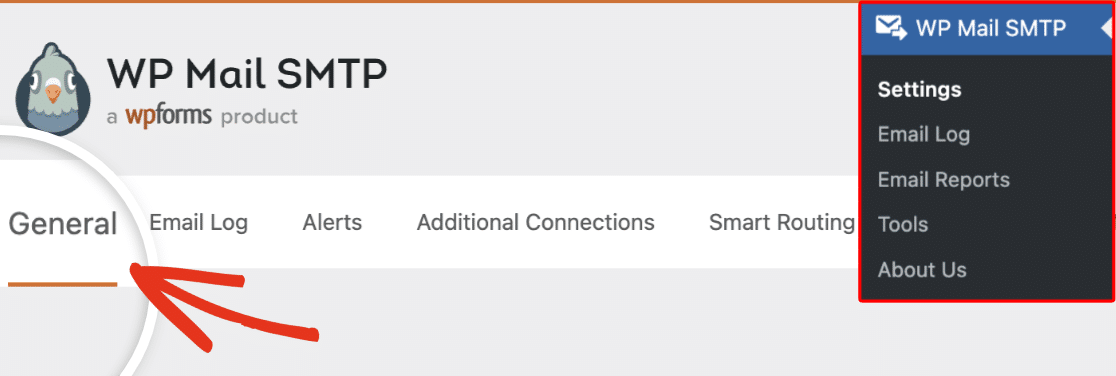
We’ll discuss each of these settings in detail below.
From Email
The From Email is the address your site’s emails will be sent from. This must be an email address at the domain you verified with Mailjet.
For example, if you authorized example.com, the From Email address must contain example.com (e.g. [email protected]).
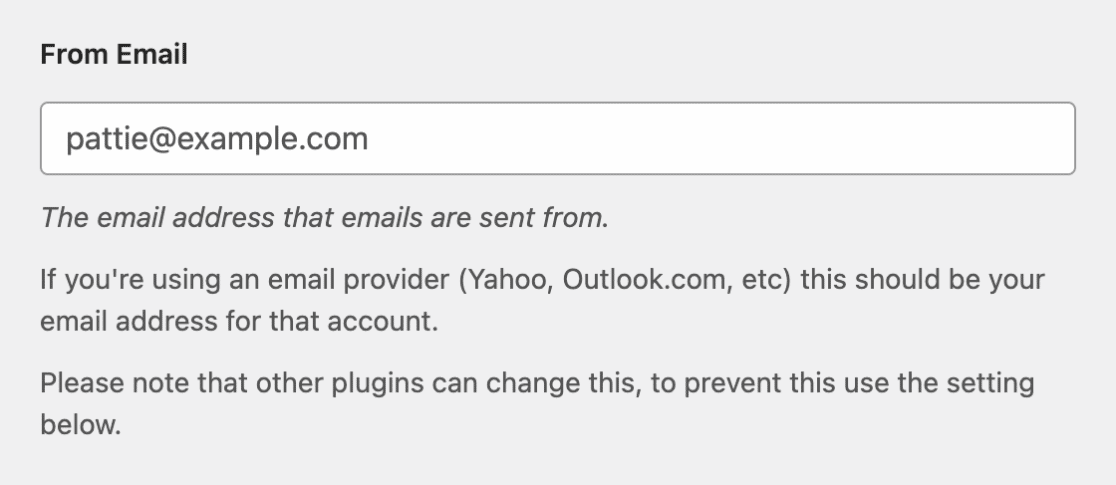
You can also choose to check the box labeled Force From Email. If you’d like the From Email to be the same site-wide, this option will save you the trouble of editing the email settings throughout your site, such as in other plugin settings.

Note: For more details, see our guide to understand how the Force From Email setting works.
From Name
The From Name will, by default, be set to your site name. However, you can change this to any text you’d like.
You can also choose to enable the Force From Name option to apply this setting to emails site-wide.
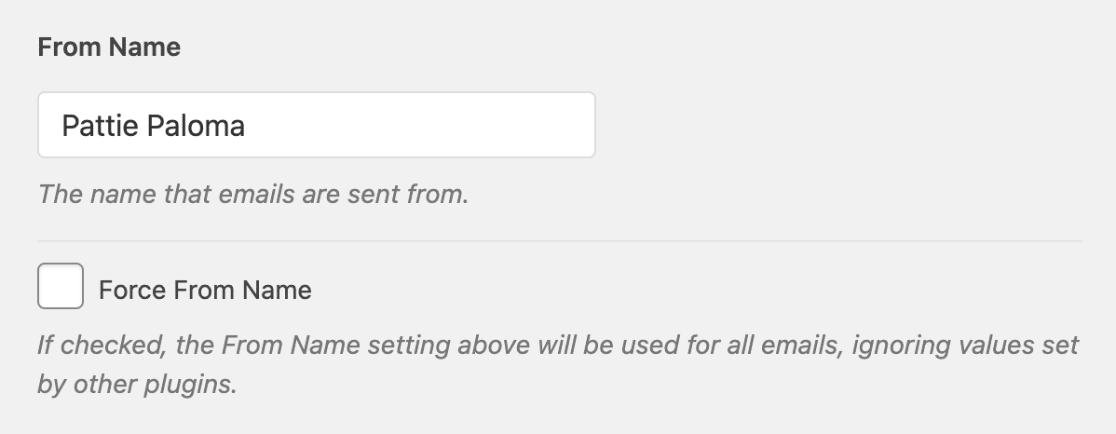
Mailer
In the Mailer field, select the Mailjet option.
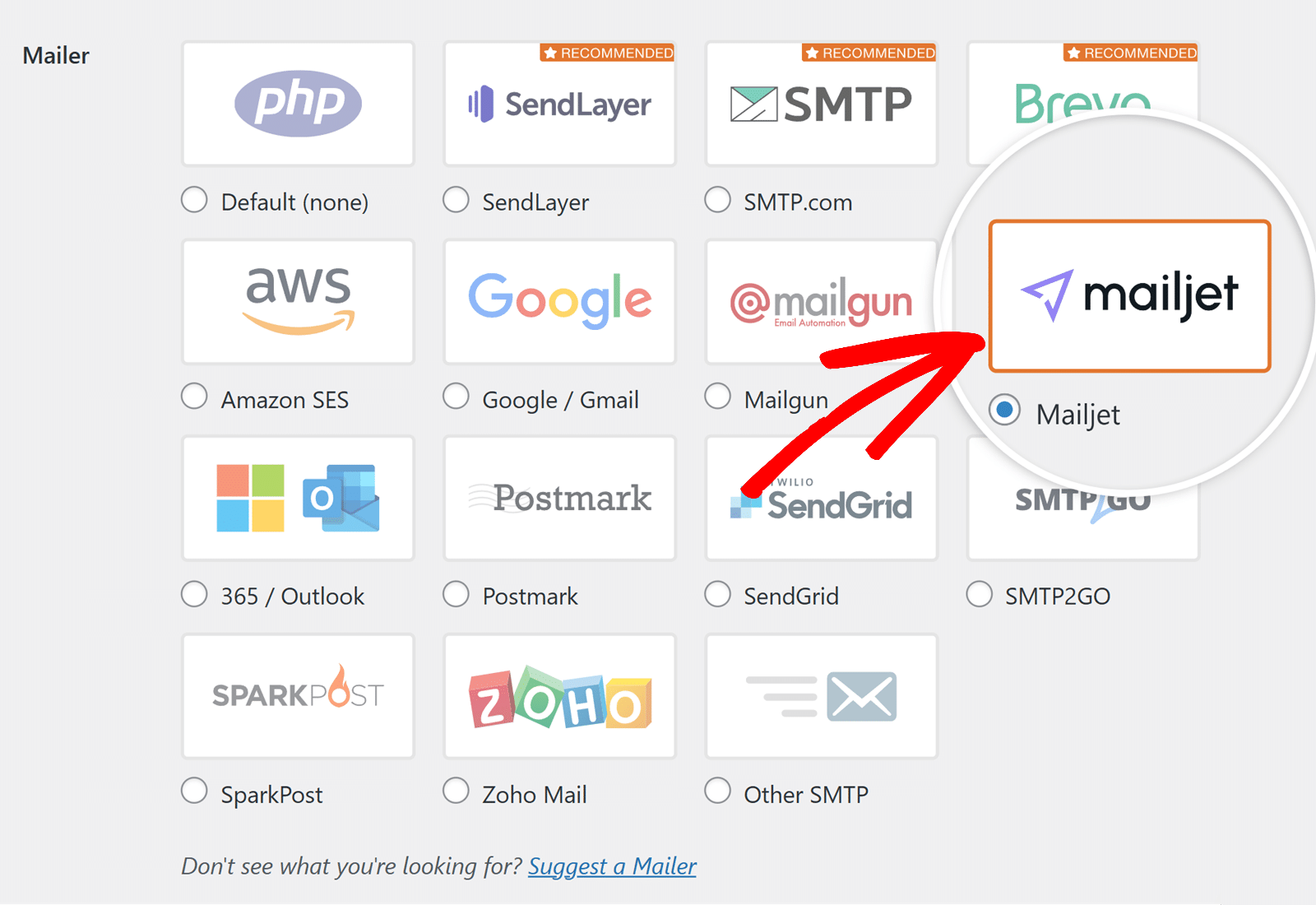
API Key
To connect your site with Mailjet, you’ll need both your API Key and Secret Key. To access these, log in to your Mailjet account and click on the API option in the top navigation menu.

This will take you to your API Key Management page where you can manage your API credentials.
Under the Primary API Key section, you’ll first need to click the Generate Secret Key button.
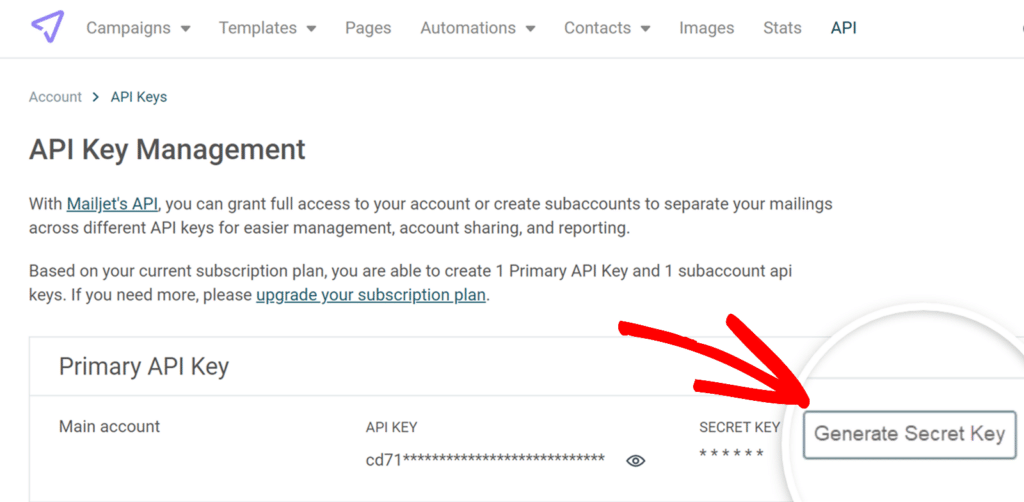
This will open a popup window displaying both your API Key and Secret Key.
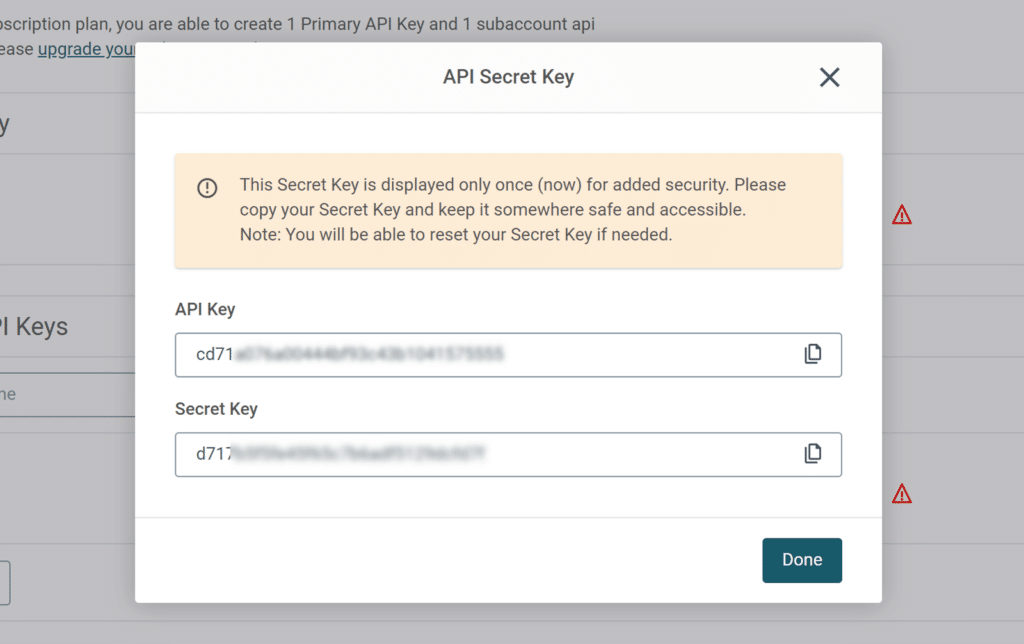
Once you have copied both keys, head back to your WordPress site’s WP Mail SMTP settings page. Here you’ll find fields for both the API Key and Secret Key. Paste the values you just copied from Mailjet into their respective fields.
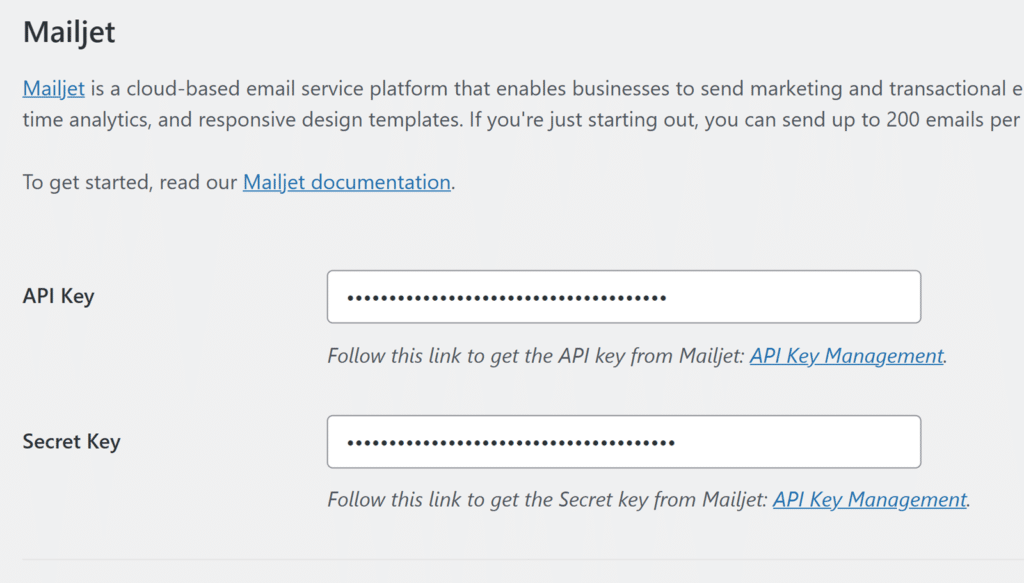
Backup Connection
Setting up a Backup Connection is optional and isn’t required to complete your Mailjet mailer setup. However, to further improve email deliverability, we recommend configuring an additional connection to serve as a backup in case your Primary Connection fails.
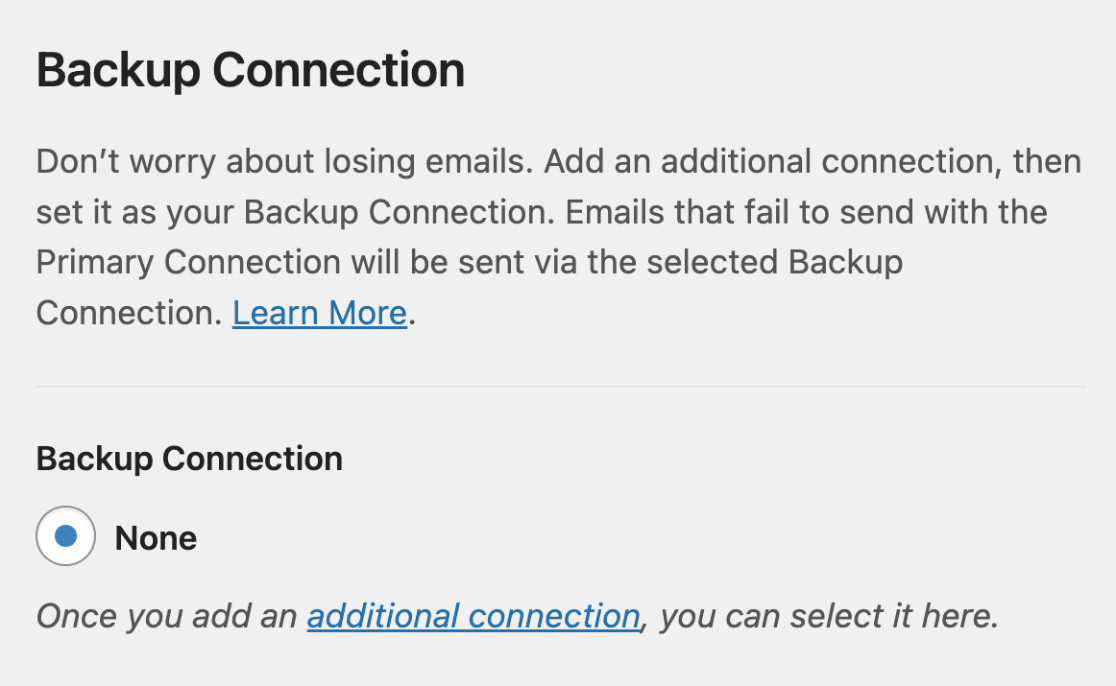
Once you’ve configured your mailer, be sure to click the Save Settings button.
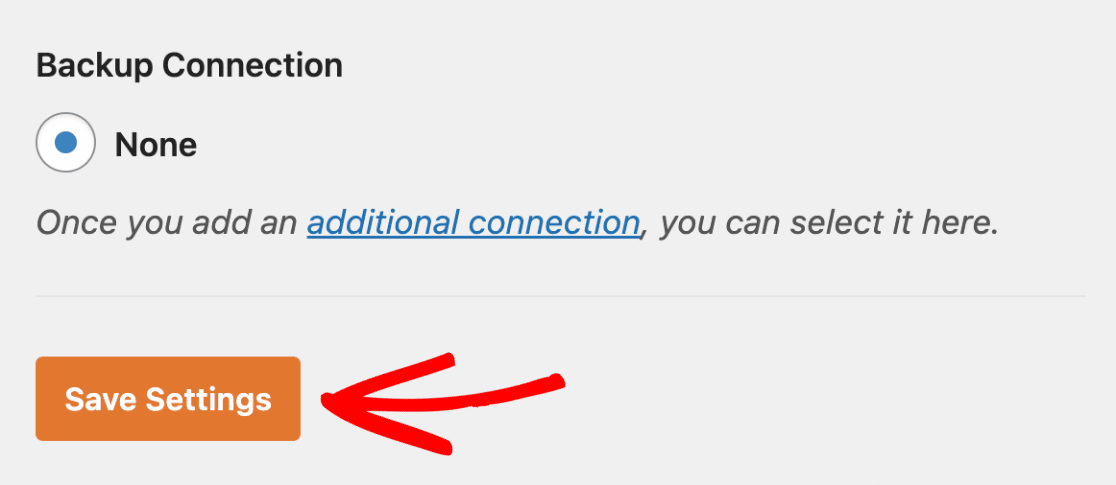
Sending a Test Email
Note: Before proceeding with this step, you’ll need Mailjet to verify your DNS records. If the changes to your DNS settings have not been propagated yet, then you’ll need to complete this step later.
After configuring your settings, you should send a test email to verify everything is working correctly. To do so, go to WP Mail SMTP » Tools and open the Email Test tab.
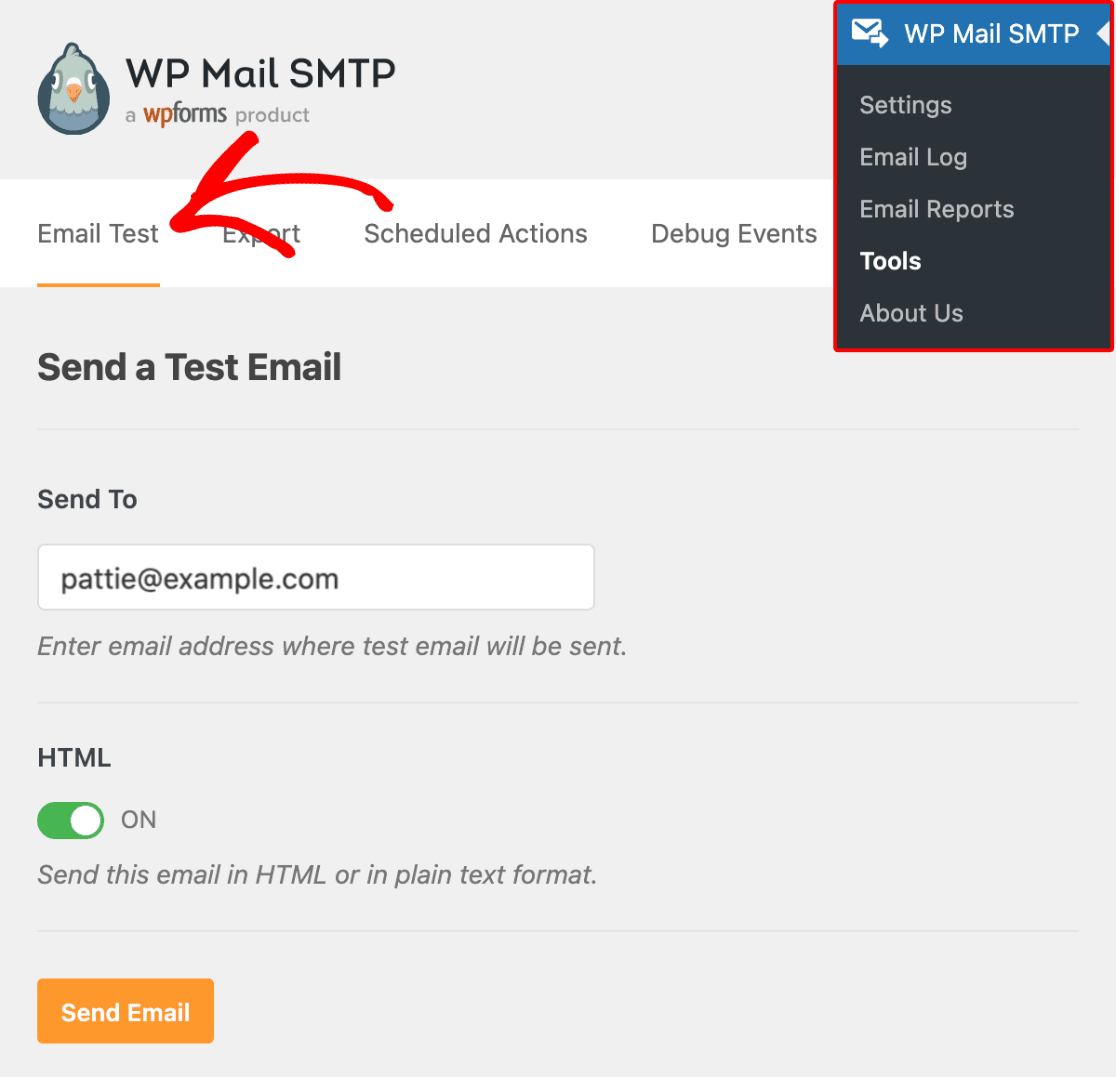
In the Send To field, you can enter any email address whose inbox you have access to. We recommend leaving the HTML setting ON unless you know you’ll only be sending plain text emails.
Note: If you’ve set up an additional connection, you’d be able to choose between your Primary Connection and other connections when sending a test email.
Next, click the Send Email button to send your test email.
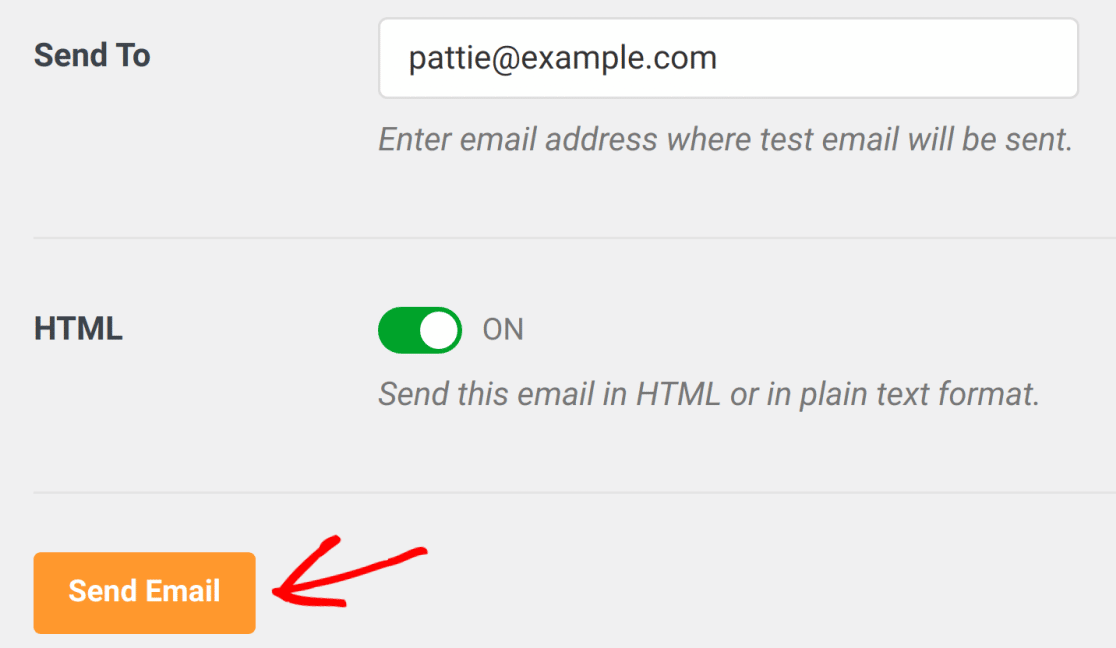
After sending the email, you should see a success message.
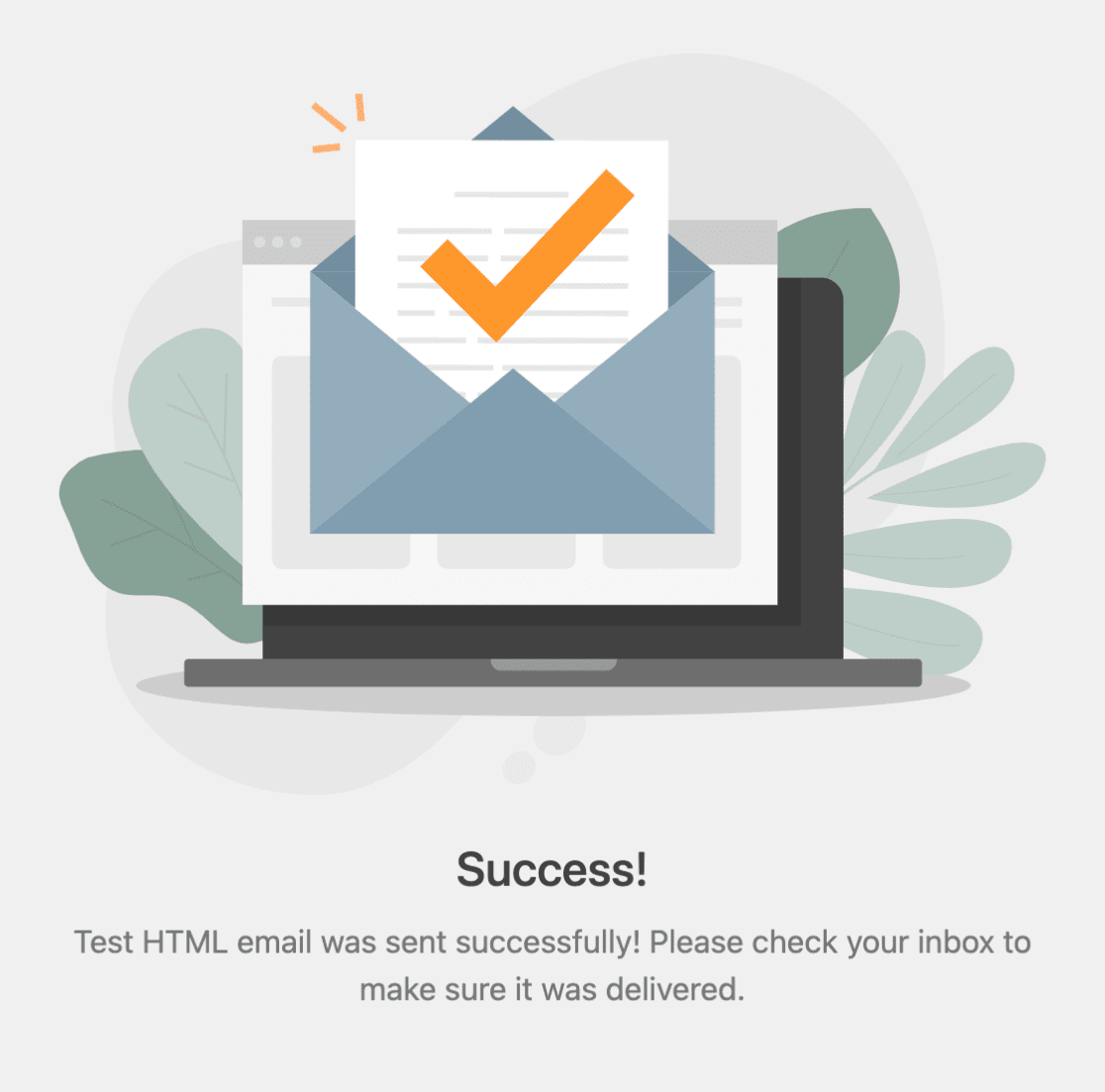
If you check the inbox for the email address you entered, you should have received the email for this test.
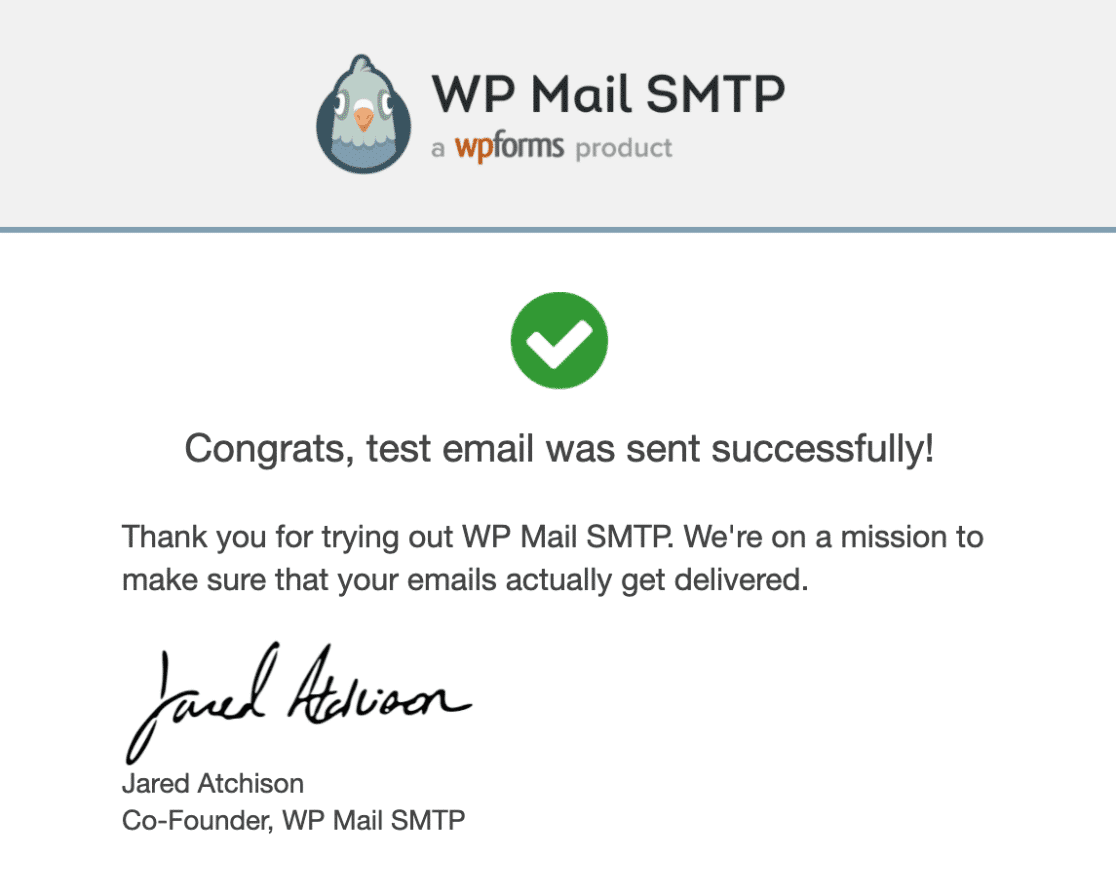
That’s it! You’ve successfully set up Mailjet with WP Mail SMTP. Your WordPress site should now be able to send emails more reliably.
Next, would you like to set up email logs so you can monitor all of the emails sent from your site? Check out our guide to the email logging feature in WP Mail SMTP for more details.
